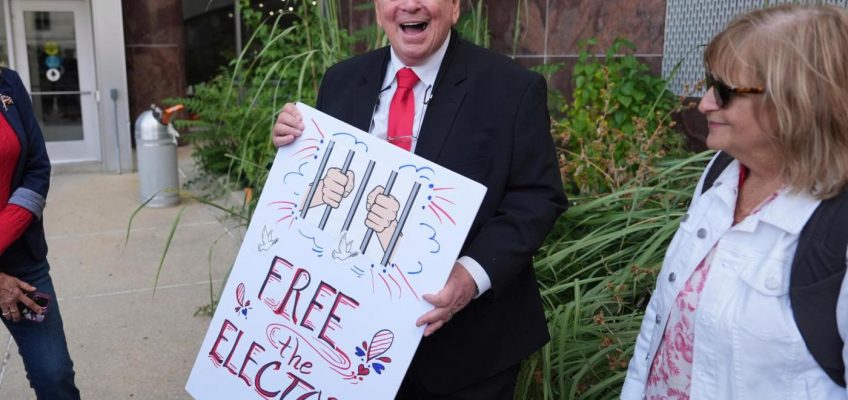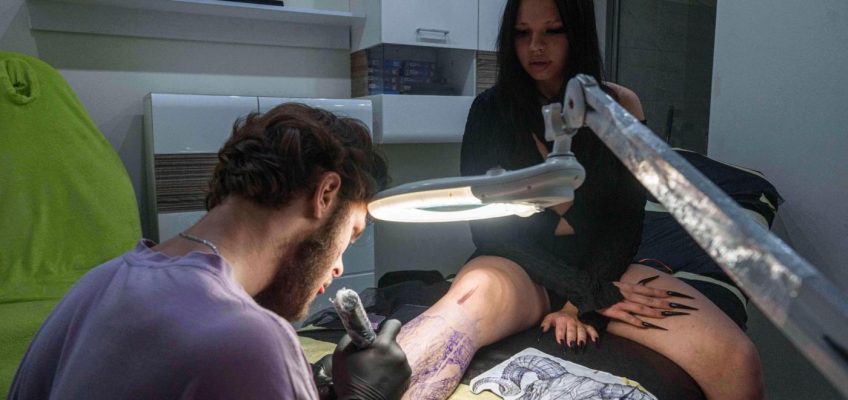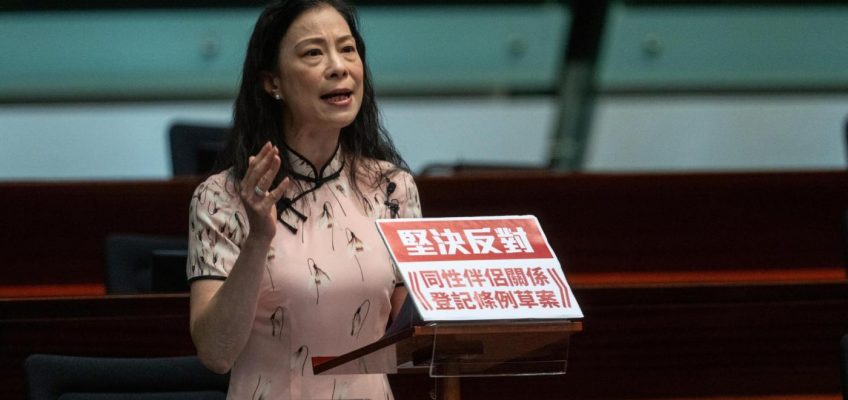By NICHOLAS RICCARDI and ISABELLA VOLMERT, Associated Press
LANSING, Mich. (AP) — Before the abandoned federal attempt to prosecute Donald Trump for trying to overturn his 2020 election loss, state and local prosecutors brought cases against his fake electors.
Related Articles
Over 40% of arrests in Trump’s DC law enforcement surge relate to immigration, AP analysis finds
Kilmar Abrego Garcia wants asylum. The US wants to deport him. What to know
3 fired FBI officials sue Patel, saying he bowed to Trump administration’s ‘campaign of retribution’
From slavery to pollution, National Park employees flagged material deemed ‘disparaging’ to US
Trump’s signature, a symbol of presidential power, is under new scrutiny thanks to the Epstein case
The term referred to the people who, in several of the swing states won by former President Joe Biden, declared themselves to be the rightful electors who would vote for Trump in the Electoral College. It was part of Trump’s long-shot bid to push Congress to reject Biden’s electors and throw the election to him.
Democratic prosecutors filed indictments against them before Trump himself was charged by a special prosecutor appointed by Biden’s Department of Justice, making the fake electors the most prominent example of how those who helped Trump faced consequences for their attempt to reverse the election results. Many of those cases have now hit a dead end or are just limping along.
The charges against Trump were dropped after he won the election, following last year’s U.S. Supreme Court ruling granting presidents immunity for much of their conduct in office. While the fake elector cases ground on, several have hit legal roadblocks — most dramatically on Tuesday when a Michigan judge dismissed charges against 15 Republicans who had been charged by that state’s Democratic attorney general, Dana Nessel.
Judge Kristen Simmons said prosecutors had not shown that the defendants intended to defraud the public.
“Right, wrong or indifferent, it was these individuals and many other individuals in the state of Michigan who sincerely believed — for some reason — that there were some serious irregularities with the election,” said Simmons, who was originally appointed by the state’s Democratic governor and then won reelection to the bench.
President Donald Trump speaks at a hearing of the Religious Liberty Commission at the Museum of the Bible, Monday, Sept. 8, 2025, in Washington. (AP Photo/Alex Brandon)
Fake electoral cases hit setbacks in other states
Simmons’ dismissal came after a judge in Arizona sent the fake electors case there back to the grand jury for fuller instructions about what federal law requires and a Nevada judge dismissed charges in that state, concluding they were filed in the wrong city.
Nevada’s attorney general, Democrat Aaron Ford, has refiled the charges, while Arizona’s, Democrat Kris Mayes, has appealed. In Georgia, the fake elector allegations are among the charges Fulton County District Attorney Fani Willis filed against Trump and others in a case that has been put on hold as she appeals her removal for ethics reasons.
In a call with reporters on Tuesday, Nessel lamented that “it’s getting harder and harder” to get election cases across the finish line.
“And I think in large part that’s because of the fear of retaliation and the ongoing intimidation of threats our judges receive when presiding over cases in which the president has a stake,” she said.
Anthony Michael Kreis, a George State University law professor who’s followed the cases, noted that they all involved unprecedented acts that the legal system had never dealt with before.
“The bottom line is, these very 40,000-foot level cases that are brought to ‘protect democracy,’ the criminal justice system isn’t equipped to handle that,” he said.
Meshawn Maddock receives a hug after a Michigan judge dismissed the criminal cases against 15 people accused of acting falsely as electors for President Donald Trump in the 2020 election Tuesday, Sept. 9, 2025 in Lansing, Mich. (AP Photo/Paul Sancya)
Vague Electoral College wording provided an opening
Each state has a set number of electors it assigns to the winner of its popular vote in a presidential contest. Those electors then cast the actual ballots for president, which are later read in Congress.
After the 2020 election, Trump and his allies exploited vague wording in a 19th century law that, along with the Constitution, governs how presidential winners are certified. Congress closed many of the potential loopholes in 2022 legislation that included specifying that a state could put forward only one slate of electors and that it was the governor who would sign off.
Those who backed Trump’s bid to overturn the 2020 election praised the dismissal in Michigan as demonstrating that the fake elector cases have been vindictive.
“We all knew from day one that we had done nothing illegal or wrong,” Meshawn Maddock, a former state party chair and the most prominent of the Michigan Republicans charged, said in a written statement. “Yes, we volunteered to be an Alternate Elector in support of Donald J. Trump. That is not a crime, as much as Nessel wanted it to be one.”
“Great news from Michigan!” Cleta Mitchell, an attorney who advised Trump during his push to reverse the 2020 results, posted on the social platform X. “Now, time for AZ, WI and corrupt GA Fani Willis indictments to now be dismissed.”
The Arizona and Nevada attorneys general’s offices declined to comment, citing ongoing legal proceedings. Wisconsin’s case, filed by Democratic Attorney General Josh Kaul, has been moving slowly but without setbacks. A judge there last month rejected the defendants’ request to dismiss the case.
One of the Michigan defendants had criminal charges dropped after he reached a deal to cooperate with the attorney general’s office. In Georgia, former Trump attorneys and advisers Jenna Ellis, Sidney Powell and Kenneth Chesebro pleaded guilty to misdemeanor charges before the case ran into ethics problems.
Defendants saw themselves as ‘alternate’ electors
Many of the defendants in the cases said they signed up for the scheme as a sort of procedural insurance in case Trump won any of the court challenges he had filed and a new slate of electors was needed urgently before Congress’ Jan. 6 deadline to tally the votes. None of the lawsuits were ultimately successful.
Marian Sheridan, one of the people charged in Michigan whose case was dismissed, said Tuesday that the group’s plan was to act as a “backup” or “lifeboat” in case the election results were overturned.
“We were not fake,” she said. “We were alternate.”
Rick Hasen, a law professor at the University of California, Los Angeles, said such arguments were part of the reason he viewed the fake elector cases as some of the “weaker” criminal ones filed after the 2020 election.
But he said the combination of the failures of those prosecutions, coupled with Trump’s avoiding liability and his pardons of more than 1,500 people convicted of crimes in the cases stemming from the Jan. 6, 2021, attack on the U.S. Capitol, are a grim combination.
“All of it fits together to create really bad incentives for a system of free and fair election and peaceful transitions of power,” Hasen said.




